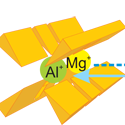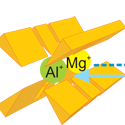Better timing with aluminum ions
Highly accurate clocks are desirable not only for improved time keeping, but for studying problems such as whether the fundamental constants are changing over time. At present, the accepted time and frequency standard is based on a microwave transition of the cesium atoms, however, clocks based on optical transitions exhibit significantly improved accuracy. The remaining limitations on optical clocks are related to their long-term stability and isolation from external perturbations such as electromagnetic interference.
As reported in Physical Review Letters, Chin-wen Chou, David Hume, Jeroen Koelemeij, David Wineland, and Till Rosenband at NIST in Boulder, Colorado, US, have now built an optical clock based on aluminum ions that has a fractional frequency inaccuracy of , more than an order of magnitude better than the cesium clock. The energy-level transition they use is especially interesting because of its insensitivity to electromagnetic and temperature perturbations. The laser cooling transition is not directly accessible, however, so the researchers used a magnesium ion to sympathetically cool the aluminum ion. In addition, Chou et al. checked the new clock against an older version that used beryllium ions. The authors conclude that frequency measurements that combine the new aluminum clock with other high-precision clocks at NIST should enable researchers to detect potential temporal changes of fundamental quantities such as the fine structure constant. – David Voss





